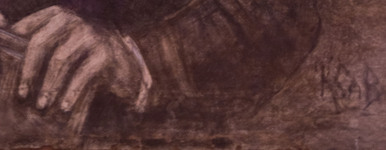The famous Russian 19th-century shawls, produced by Merlina and the Kolokoltsovs, were inspired by Indian cashmere fabrics. Due to the great demand for this fashionable accessory, two manufactories were established in the Russian Empire: by brothers Dmitry and Grigory Kolokoltsov in the Penza Governorate and their sister Nadezhda Merlina in the Nizhny Novgorod Governorate. Their shawls were recognized with numerous awards at international exhibitions and were worn by representatives of the nobility and the imperial family.
In his memoirs, Prince Ivan Dolgorukov wrote that the French envoy Caulaincourt “was willing to pay [Merlina’s] factory 10,000… for a shawl of excellent workmanship” for Napoleon’s wife. However, the patriotic businesswoman refused to “let the Russian shawl be sent to a foreign land.”
The wool for such shawls was spun from the down of Kyrgyz and Angora goats and combed out using metal combs and hot oil. The shawls were double-sided and decorated with exquisite patterns of numerous colors. The patterns were based on floral motifs arranged in garlands and bouquets. Special shuttles resembling very thin bobbins were used for weaving. It took two weavers between one and a half and two years to make a single shawl, and many weavers lost their eyesight before turning 30 and were forced to give up their job.
Another remarkable detail of Radishcheva’s outfit is the ceremonial bonnet, a traditional headdress of a married lady. Such bonnets were sewn from fine gauze, decorated with ribbons, lace, and flowers.
The Radishchevs were the last owners of the
Verkhneye Ablyazovo estate. Nowadays, it is known as Radishchevo and houses the
writer’s museum.

